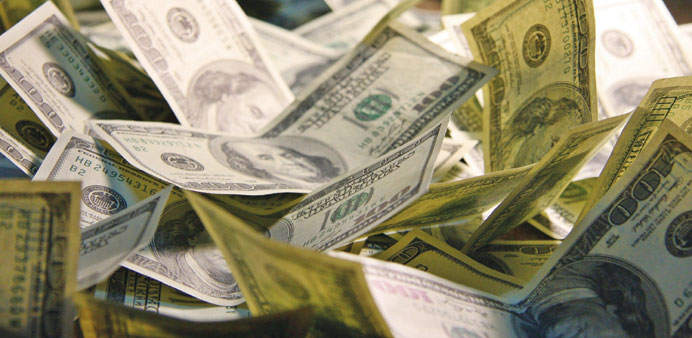Bloomberg
New York
Dollar bulls are becoming the US labour market’s biggest cheerleaders as Federal Reserve policy makers consider a path to higher interest rates.
The greenback advanced the most last week in more than a month, climbing versus all of its major peers.
A government report due July 2 is forecast to show unemployment falling to pre-crisis lows, supporting Fed plans to raise borrowing costs this year, which would add to the allure of the US currency.
“US data is rebounding so if payrolls are good that puts September in play” for a rate increase, Daniel Brehon, a New York-based strategist at Deutsche Bank AG, said by e-mail. “Risk is to the topside,” he said, adding that this would inject added life into the dollar rally.
The Bloomberg Dollar Spot Index, which tracks the US currency versus 10 of its major peers, added 1.1% last week to 1,180.11 in New York, the most since the week ending May 22.
The greenback snapped a three-week decline against the euro, rising 1.6%, and strengthened 0.9% versus the yen.
Hedge funds and other money managers increased futures positions that profit from dollar gains against the euro for the first time in four weeks as of June 23, according to data from the Commodity Futures Trading Commission.
The central bank has adopted a data-dependent approach as it moves to raise rates for the first time since 2006. Officials boosted their assessment of the jobs market at their meeting this month, with Chair Janet Yellen referencing a pick-up in the pace of job gains.
American companies hired more than 200,000 workers for a third-straight month, the report will show, according to the median estimate of analysts surveyed by Bloomberg.
Unemployment will decline to 5.4%, reversing last month’s uptick and taking the rate back down to its lowest since 2008.
“Early indicators show nonfarm payrolls could be stronger than anticipated,” said Jennifer Vail, head of fixed-income research at US Bank Wealth Management, which manages $126bn. “That would likely mean a rise in yields here domestically and reversal of some of the current trend in the dollar.”
The monthly release, typically on a Friday, is a day early to accommodate a US national holiday.
The dollar rallied 0.8% after the jobs report on June 5, before slumping for the next three trading days as subsequent releases proved insufficient to fuel further buying.
Reports this week that showed household spending climbing the most in almost six years and consumer sentiment jumping to a five-month high suggest this time it will be different.
“We get these strong payroll numbers, the dollar does very well, and then it doesn’t last,” Steven Saywell, global head of foreign-exchange strategy at BNP Paribas SA, said in New York Thursday. “Investors now want to see a little bit more meat.”
The dollar has rallied 19% during the past 12 months, the best performer among 10 developed-nation currencies tracked by Bloomberg Correlation-Weighted Indexes.

The greenback advanced the most last week in more than a month, climbing versus all of its major peers


